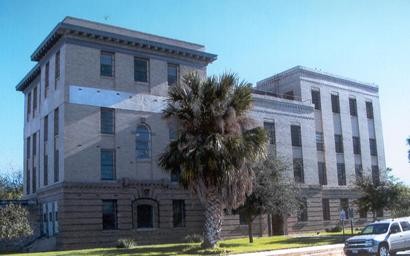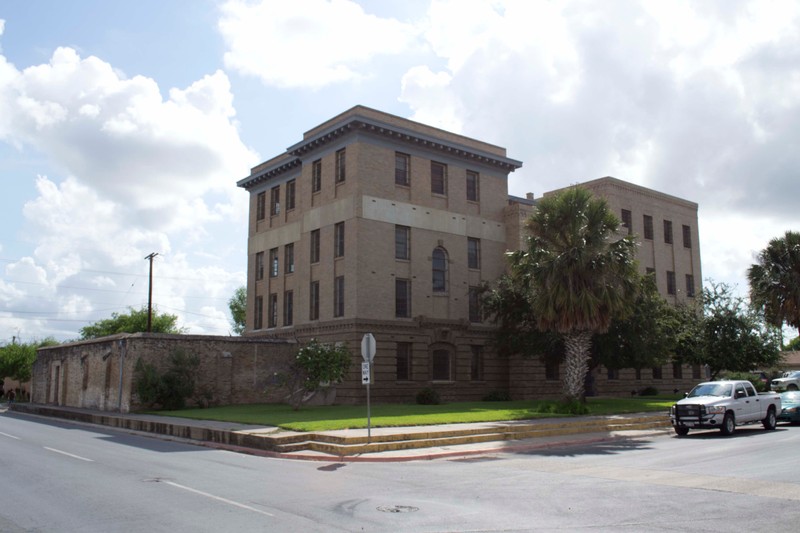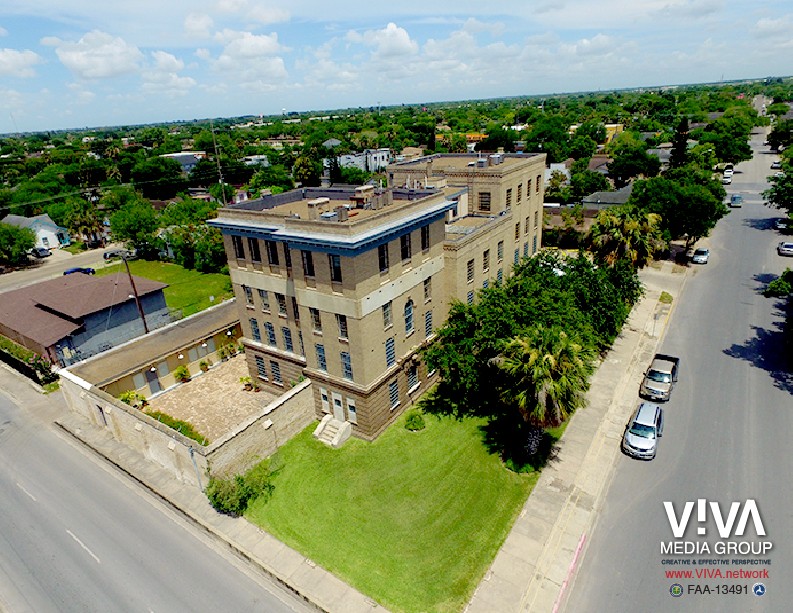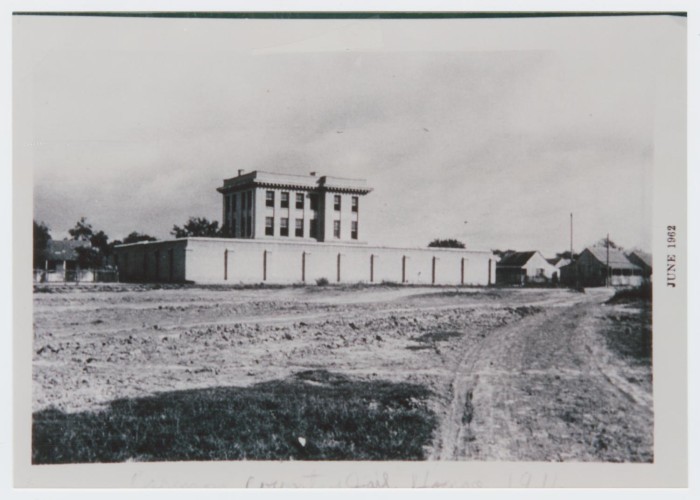Old Cameron County Jail
Introduction
Text-to-speech Audio
Images




Backstory and Context
Text-to-speech Audio
Cameron County, the southernmost county in Texas, was created from Nueces County on February 2, 1848, with Santa Rita as its temporary seat. Shortly, however, Brownsville was named the seat of county government. Records of the second county court session in Brownsville on January 15, 1849 stated that “the Chief Justice be authorized to advertise inviting proposals with plans for the building of a jail” that was twenty-four-feet by thirty-two-feet in dimension. Early records also indicate that facilities were rented from both B. F. Hickman and I. B. Bigelow, the county’s Chief Justice. Though specifications and plans for a jail were proposed by J. G. Browne, these were “held over” on August 20, 1849. The county commissioners evidently changed their initial plans to purchase land and build a jail.
The town’s first ordinances were passed on May 4, 1850, and the police force was organized on February 7, 1853, creating a more urgent need for a jail. In December 1852, the county signed a contract with Daniel Wolf to purchase the building already being rented for a jail. Wolf was to thoroughly repair the current building and, additionally, build a wooden frame building to the rear of the lot, the latter which was utilized as the future Cameron County Courthouse. The buildings stood at the corner of Levee and Tenth Streets, and brick walls enclosed the jail. In writing of an 1855 jail escape, author Henry Ferguson noted that “it was practically impossible to keep any prisoner who desired to escape in the fragile shack that served as a jail”. Despite this, the building served the county for some thirty years, though it was pronounced unfit and only partially floored in 1860. Men and women were housed together and shackled to the floor at night to prevent escape.
The 1912-1913 jail and courthouse buildings were both constructed in response to new state legislation. A law passed in 1881 allowed counties to sell bonds for courthouse construction. In addition, the 1876 state constitution and subsequent legislation required counties to provide detention facilities that were secure and humane. On October 11, 1911, Cameron County voters approved $200,000 in courthouse and jail bonds to construct the new facilities. County Commissioners advertised for sites for the courthouse and jail, and separate parcels were selected and purchased. The jail site, at the corner of Van Buren and 12th Street, was bought from the New York and Brownsville Improvement Company for $1,500. A separate site was selected for the courthouse at 1150 East Madison.
It was still common in the early twentieth century for jails to occupy the top floors of courthouses, and Willard Robinson, in his book, The People’s Architect: Texas Courthouses, Jails and Municipal Buildings, states “new jail buildings as separate entities were not numerous during this era”. When separate, Robinson describes the typical, late nineteenth century Texas jail as a two- or three-story cube containing sheriff’s quarters, detention blocks, and occasionally, installations for other punishments. The jailer or sheriff lived on the ground floor, and the second and third floors were cell blocks. A typical jail of the period might have been zoned to segregate prisoners by crime and sex, which was a departure from earlier detention practices in the United States.
The 1912 jail and courthouse construction contract initially awarded to Standard Construction Company of Dallas but when delays occurred, the contract was assigned to Gross Construction Company which completed to projects for a total of $187,715. Cell work for the Cameron County Jail was supplied by San Antonio’s Southern Steel Company, later called Southern Prison Company, at a cost of $3,674. It was the cell work that delayed final completion and occupancy of the jail. The jail was not occupied until sometime in 1913.
Cite This Entry
Browning, Sara. "Old Cameron County Jail." Clio: Your Guide to History. January 12, 2021. Accessed April 18, 2025. https://theclio.com/tour/1568/6
Sources
Old Cameron County Jail, National Register of Historic Places. Accessed January 8th 2021. https://catalog.archives.gov/id/40971481.
Old Cameron County Jail, The Portal to Texas History. Accessed January 8th 2021. https://texashistory.unt.edu/ark:/67531/metapth965132/.

